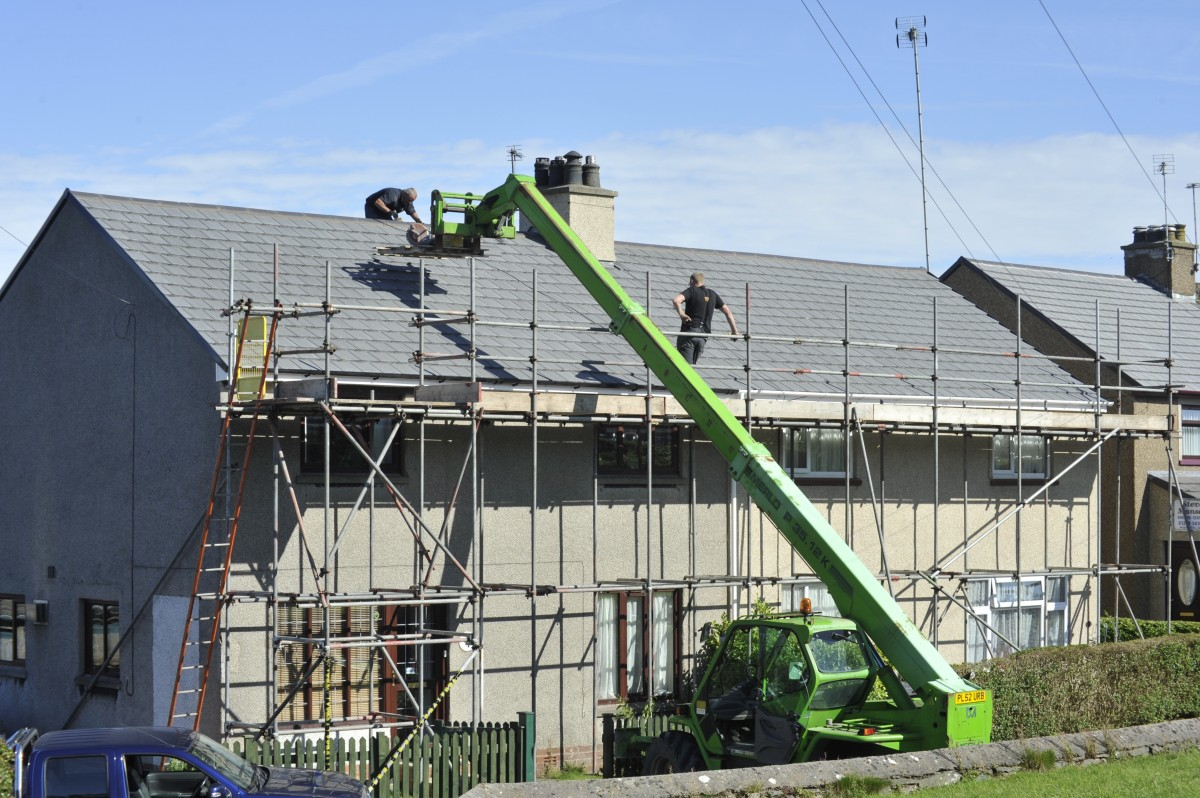Small Business
Slow Housing Market Could Affect Remodeling Contractors in 2020
A contractor not returning your calls? Consider calling next year. Remodelers are having one of their busiest summers ever, but that’s likely to change.
Aug. 12, 2019

A contractor not returning your calls? Consider calling next year. Remodelers are having one of their busiest summers ever, but that’s likely to change.
The annual gain in home-improvement spending is expected to fall by as much as half in many major real estate markets by the end of this year, according to the Joint Center for Housing Studies of Harvard University.
That’s good news for homeowners with big projects on their lists, but it’s putting remodelers, handymen and their subcontractors on edge.
“If you’ve been in business more than two years you’re always worried about what next year will be like,” said John Sylvestre of Sylvestre Remodeling and Design in Richfield, Minn. “I’m a little more nervous about what’s going to happen next year.”
The biggest worry is slowing home sales, a leading indicator for home-improvement expenditures. Here’s why: Homeowners are much more willing to defer big projects than those making a move.
Sylvestre and other contractors say that when people remodel their current homes, they tend to tackle smaller projects and spend less than move-up buyers like Ray and Donna Bronson, who bought a house in Edina, Minn., last fall. The floor plan had a main-level master bedroom and bathroom that fit their needs perfectly, but they knew when they bought the house that they’d have to update the 15-year-old kitchen.
What started out as a fairly defined project turned into a nearly whole-house remodel.
Because the house has an open floor plan, they quickly realized they couldn’t update the kitchen without giving the rest of the main level rooms a matching face-lift.
“The house has an overabundance of brown wood,” Ray Bronson said. “All of that got stripped out.”
They broadened the scope in other ways, including new bathroom fixtures, reconfiguring the laundry room and installing up-to-date audio equipment.
“Not too much is being left the same,” Bronson said.
The Bronsons wanted the job to be finished before they leave for warmer climes this fall, and they’d been burned on a previous remodeling project that took twice as long as expected. So they started interviewing three design-build firms in early January, hoping for a spring start.
“This wasn’t my first rodeo,” said Ray Bronson. “Scheduling was a big factor.”
Their contractor, Ed Roskowinski, owner/general manager of Vujovich, said that since the recession, annual sales have been increasing about 5% to 10%, but he’s expecting a shift.
“I look at 2020 as maybe a challenging year, he said. “I see the economy slowing a bit now, which will affect us in about six months.”
Roskowinski agrees there’s a correlation between demand for his services and home sales. So far this year, home sales in the Twin Cities haven’t kept pace with 2018, mostly because of a shortage of listings that are affordable to first-time buyers and baby boomers. At the same time, the median price of those closings is at an all-time high, putting homeownership out of reach for a growing number of would-be buyers.
There’s another factor for a possible slowdown, Roskowinski said. During election years, homeowners spend less on their home-improvement projects.
“Every four years you see a downtick (in sales) for about four months,” he said. “A lot of our clients are tied to the stock market, so they’re a little uncertain and will sit on their wallets and until the election is done.”
That’s not necessarily the case for much smaller companies that focus on more routine home maintenance and small remodeling projects. Mike Sitek, owner of Handyman Matters in Edina, said that in contrast to firms on larger projects, his company specializes in window and door replacements, deck repairs and other projects that can’t be put off indefinitely, no matter the economy. He now has more work than he can handle and said the calls keep coming. It’s now taking 30 to 45 days to bid a job,
“There’s more work out there to do than you can imagine,” he said. “It’s a great business to be in, but people get upset that they have to wait.”
Sitek and other remodeling companies say their biggest challenge now is finding skilled workers and subcontractors. While many firms have a small pool of carpenters, most rely on shrinking pools of subcontractors.
“Our contractors are constantly telling me they have to turn away jobs because they don’t have the labor to do the jobs,” said Beatrice Owen, executive director of the Minnesota chapter of the National Association of the Remodeling Industry (NARI). “There just aren’t enough employees.”
Harvard’s Leading Indicator of Remodeling Activity (LIRA) says annual gains in homeowner expenditures for improvements and repairs across the nation are expected to shrink to just 0.4% by the second quarter of 2020. That’s compared with 6.3% now.
New data also show remodeling spending during recent years wasn’t nearly as robust as expected, so the Joint Center recently cut by more than half its projections for annual growth in remodeling spending in 2016 and 2017, now estimated at 5.4%.
“Declining home sales and homebuilding activity coupled with slower gains in permitting for improvement projects will put the brakes on remodeling growth over the coming year,” Chris Herbert, managing director of the Joint Center for Housing Studies, said in a statement. “However, if falling mortgage-interest rates continue to incentivize home sales, refinancing and ultimately remodeling activity, the slowdown may soften some.”
———
©2019 Star Tribune (Minneapolis)
Visit the Star Tribune (Minneapolis) at www.startribune.com
Distributed by Tribune Content Agency, LLC.
